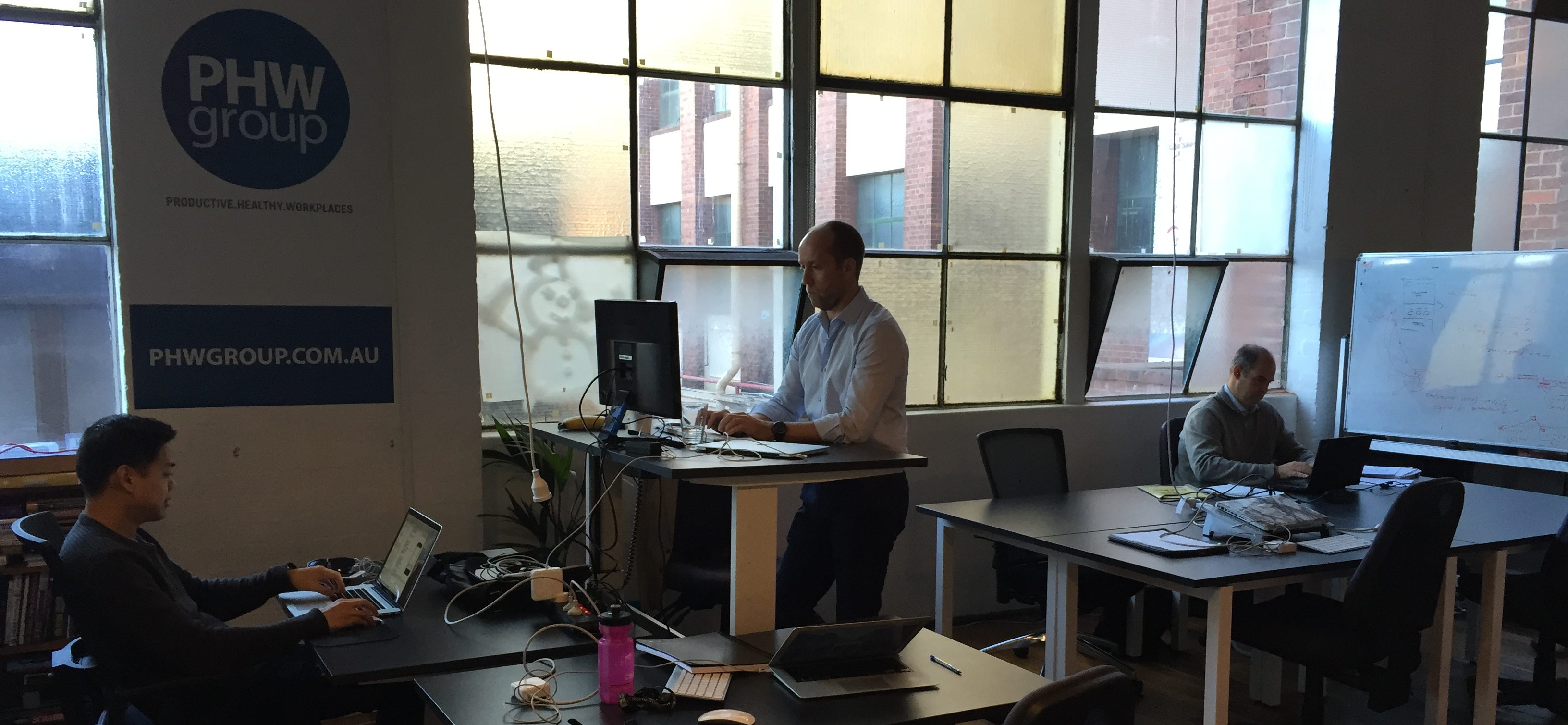Demand is growing for healthier workplaces as increased evidence links sedentary work to poor health effects. Co-working spaces are among those leading the trend for healthier office design.
Sedentary behaviours are a known risk factor for cancer, cardiovascular disease, type II diabetes and early death. The more hours we sit down, the worse the effects. The risk is so significant that some researchers believe interventions are now needed to reduce sedentary behaviour.
Ryan Ebert, a trained physiotherapist who founded occupational physiotherapy and workplace training company PHW Group, says workplaces need to improve.
“Companies are now realising the productivity and employee benefits that come from having a work environment designed with a health focus. We know comprehensively that movement enhances cognition and implementing organisational psychology elements into a health design can improve employee output as well as lead to healthier and happier people. This ultimately has an effect on staff retention and attraction of staff talent,” Ebert says.
VARIDESK, a manufacturer of height-adjustable standing desks, cites research showing people are 46% more productive when using a standing desk. CEO Jason McCann says sit/stand desks are becoming a key concept in workplace design.
“They’re doing this because it not only helps lower healthcare costs; it improves productivity, lowers absenteeism and helps retain talented employees,” McCann explains.
Many other technologies being used come from the emerging wearables industry, according to Ryan Ebert. These are helping designers create better workplaces by testing the results.
“These technologies whilst not always 100% accurate are great to be used to track trends before and after office design and ergonomic interventions. Further technologies being used to improve health outcomes in this space are reminder applications i.e. every 45 minutes computer reminders go off to change posture/stand/go for a walk,” Ebert explains.
PHW is using devices such as DorsiVi lumbar trackers to assess back pain outcomes, and muscle activity tracking technology and heart rate monitors are also being used to assess outcomes.
According to initial qualitative results from PHW’s clients, including the Australian Physiotherapy Association, co-working space Inspire9 and a top-tier law firm, show “positive improvement of health benefits, increased movement and self-reported improved productivity.”
VARIDESK says flexibility is key as different workplaces need different solutions. It has worked with a wide range of different companies who want to leverage the “active office” concept. As such, its product line has been designed to suit different styles and needs, from desktop models that turn any desk into a standing desk, to a cubicle series that fits most modular office systems, all the way up to freestanding, full desk replacements.
“For some, it’s a matter of retrofitting existing desks, for others it’s about creating co-working spaces that can transition from sitting to standing and back again depending on the workers’ preference,” McCann says.
Australia currently leads Asia in adopting a healthier and more active design focus. It’s partly why VARIDESK chose Australia for its first international market,
“Per capita, we have higher market penetration in Australia than any other country in the world. Australians truly embrace standing and lead the way in building active office environments,” says Jason McCann, CEO, VARIDESK.
However Ryan McCann says Asian companies are starting to show considerable interest in features such as sit and stand workstations and offices designed with a health focus.
“We are optimistic that Asia will adopt these concepts sooner rather than later and when the day comes, the technology and manufacturing improvements that result will be very exciting.”


 Dr. Gleb Tsipursky – The Office Whisperer
Dr. Gleb Tsipursky – The Office Whisperer Nirit Cohen – WorkFutures
Nirit Cohen – WorkFutures Angela Howard – Culture Expert
Angela Howard – Culture Expert Drew Jones – Design & Innovation
Drew Jones – Design & Innovation Jonathan Price – CRE & Flex Expert
Jonathan Price – CRE & Flex Expert











